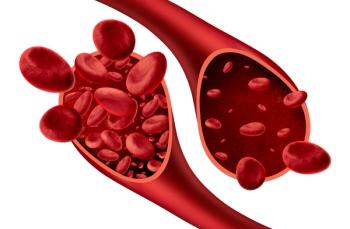
How the SGR repeal will impact managed care
Experts weigh in on what to expect as provisions of the Medicare Access and CHIP Reauthorization Act roll out.
President Barack Obama signed the
The SGR, enacted as part of the
Related:
The $214 billion MACRA reform package puts an end to those short-term fixes by repealing and replacing the flawed formula through a heavy reliance on payment reforms. "The new law contains provisions meant to consolidate and accelerate ongoing efforts to reform Medicare's physician payment system to reward higher quality and better outcomes rather than greater volume and intensity," says Stuart Guterman, vice president, Medicare and Cost Control,
Senate overwhelmingly approved MACRA bill.
The U.S. Senate approved the MACRA bill by a vote of 92 to 8 and the U.S. House of Representatives passed it by a 392 to 37 vote. "The overwhelming bipartisan support underscores that the changes are here to stay," says Danielle Lloyd, MPH, vice president of Policy and Advocacy and deputy director of Premier's Washington, DC, office.
Here's more on some of the biggest changes included in MACRA, and how those changes will affect healthcare, health plans, and health providers.
Medicare payment cuts
To partially offset the cost of repealing the SGR, MACRA cuts Medicare payments to hospitals and to post-acute providers. As a result, Guterman says there will be fewer Medicare fee-for-service payments.
"A greater emp
hasis will be placed on alternative payment models that reward high performance," he says. "Hopefully, providers will be able to respond to these strengthened incentives, and payment rates will be high enough relative to efficient levels of costs resulting in high-performing providers doing well financially."
Related:
In addition, the law-also known as HR 2-adjusts Disproportionate Share Hospital (DSH) funding for states, delaying cuts scheduled to begin in 2017 by one year and extending them through 2025.
Guterman says this reflects the fact that, because of the decisions by many states not to participate in the federally-funded Medicaid expansion, health coverage has not expanded as rapidly as it might have otherwise. Consequently, although hospitals across the country have benefitted from more patients with healthcare coverage, it will take more time for them to feel the full effects.
MACRA also limits the 2018 payment update for post-acute providers to 1%, and requires an increase in payments to hospitals scheduled for 2018 to be phased in over six years.
Fee schedule changes
In place of governing Medicare Physician Fee Schedule (PFS) payments through the SGR, MACRA spells out specific annual updates to payments for the next decade and beyond.
Starting in the second half of 2015 through 2019, PFS payment rates will be updated by .5% annually. MACRA then freezes payment rates for five years (from 2020 to 2025).
Beginning in 2026, payment rates will be updated by .25% annually for providers that participate in a new Merit-Based Incentive Payment System (MIPS) or by .75% annually for providers that participate in alternative payment models.
Related:
In addition, physicians can receive a 5% bonus for entering alternative payment models if they meet the requirement that a certain percentage of their pay flows through such models. In later years, that can be satisfied through a combination of Medicare and other payers.
"This will likely increase the number of providers seeking such contracts in the private sector," says Danielle Lloyd, MPH, vice president of Policy and Advocacy and deputy director of
Value-based movement
Ultimately, these new Medicare payment incentives will make it easier for managed care organizations to shift providers toward value-based payment models. "MIPS will reward providers who perform well on measures related to quality, resource use, clinical practice improvement, and use of electronic health records," Barkett says.
Lloyd expects that physicians will start to evaluate the two payment options and begin asking strategic questions, such as:
- Should I continue working independently?
- Should I join a larger group or look for employment at a health system?
- Should I stay in fee-for-service or take the plunge into an alternative payment?
- Do I have the infrastructure necessary to manage population health or does it make sense to form strategic partnerships with those that do?
"To the extent that eligible professionals begin to band together in larger groups or with hospitals, they may have more leverage with health plans to negotiate better rates-especially if they are reducing overall spending," Lloyd says.
DunhamWhile there's no direct effect on Medicare Advantage plans, Guterman maintains that the message sent by these provisions should encourage changes in the organization and practice of medicine that should benefit private plans.
Related:
"Providers and plans have been dealing with an environment in which policy makers say they want to move away from volume-based payment-but payment itself is still volume-based," Guterman says. "Even before MACRA was passed, there was increasing momentum in the movement away from volume-based payment. MACRA ... should increase that momentum considerably."
Patrick Dunham, CEO,
Medicare benefit reforms
MACRA also calls for changes to Medicare benefits to offset the cost of repealing SGR. Specifically, it restricts so-called "first-dollar" Medigap coverage for new Medicare enrollees beginning in 2020. Medigap plans for these beneficiaries would only cover costs above the Part B deductible. In addition, MACRA raises the percentage of premiums for Parts B and D that high-income beneficiaries are required to pay beginning in 2018.
Single seniors reporting income between $133,500 and $150,000 and married couples with income between $267,000 and $300,000 will see their share of premiums rise from 50% to 65%. Single seniors reporting income between $160,000 and $200,000 and married couples with income between $320,000 and $400,000 will see their premium share rise from 65% to 80%.
Related:
Guterman believes the new restrictions on Medigap coverage will increase the effectiveness of any new payment reforms by making beneficiaries more sensitive to the cost of their care. "But increased out-of-pocket costs can be harmful to the large number of Medicare beneficiaries who have low incomes or are in poor health," he says. "There are ways to protect these beneficiaries, such as improving Medicare benefits, providing positive incentives to beneficiaries who use high-value providers like accountable care organizations or patient-centered medical homes, and including out-of-pocket maximums in Medicare plans like those found in most employer-based plans."
Making traditional Medicare more like private plans (offered to employees) will make it easier for Medicare Advantage plans, private employer-based plans, and those offered through the health insurance marketplaces to align their policies with the system-wide goals of better care, better health, and lower costs, says Guterman.
CHIP funding expanded
MACRA also addresses the impending expiration of funding for the Children's Health Insurance Program (CHIP) and community health centers. While funding for both programs was slated to end this year, the law extends funding for both through 2017.
Related:
Still, Lloyd warns that extending funding only through 2017 could be problematic. "Federal funding for CHIP could end or be reduced at that time," she says. "It is important for states in the next two years to identify high-value initiatives that improve access or enrollment and that will warrant continuation if cuts are made. This likely means that states will continue to move toward alternative payment models and value-based pay. States will also continue to look to managed care as an option as they seek stability in budgeting."
Data access expanded
Under MACRA, quality measurement organizations can develop quality measures using Medicare data and share it with employers and insurers for the purposes of designing their health plans. This will make it easier for all payers to align providers' incentives to offer high quality care, Barkett says.
The amount of publicly available healthcare data could double as a result of the new legislation. This could help researchers identify which treatments work best and which providers deliver the best outcomes. These findings could yield billions of dollars in savings.
Karen Appold is a medical writer in Pennsylvania.
Newsletter
Get the latest industry news, event updates, and more from Managed healthcare Executive.






















































